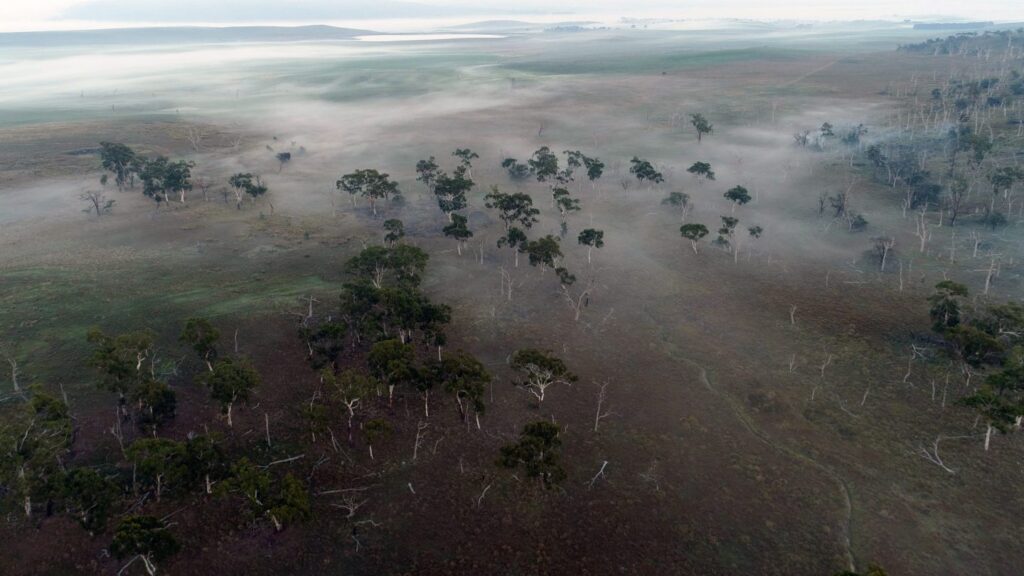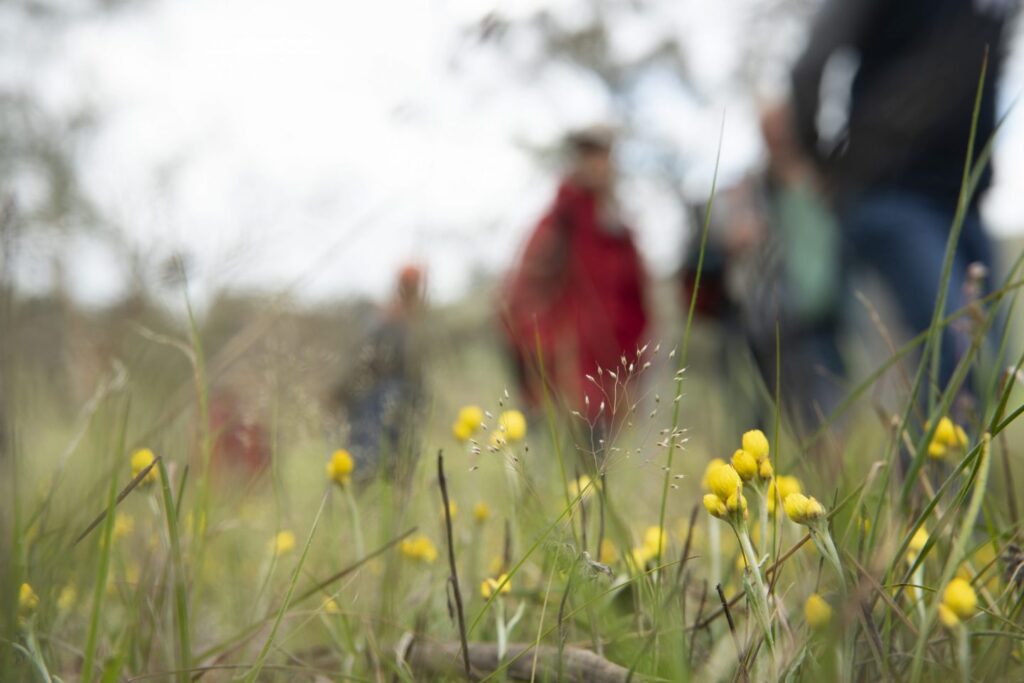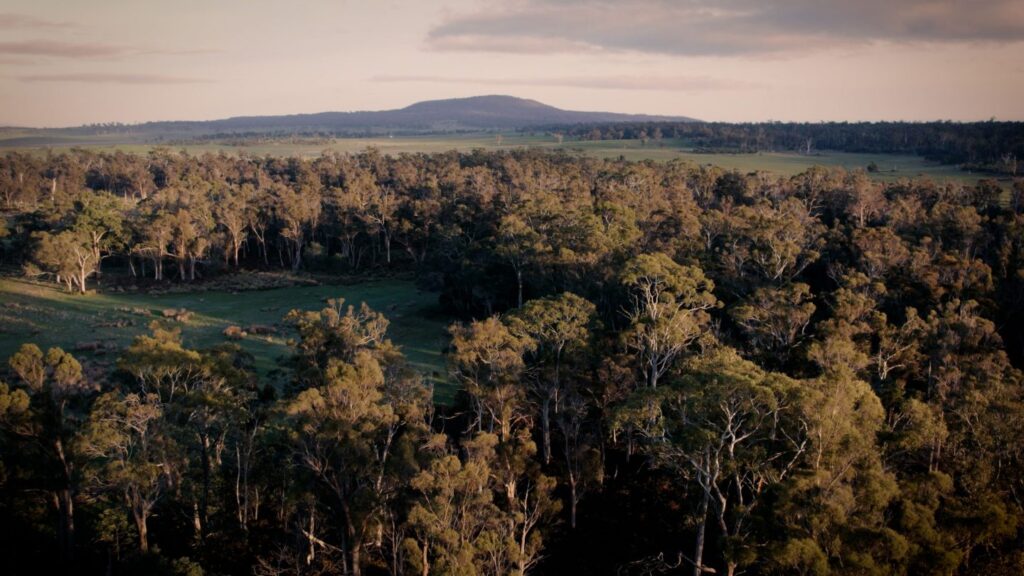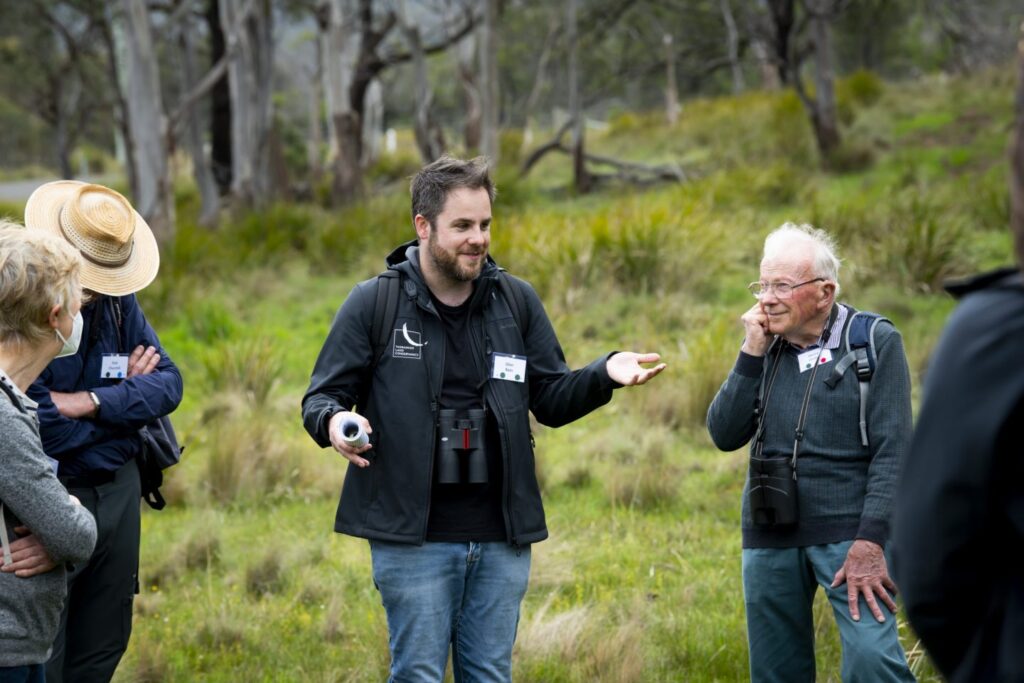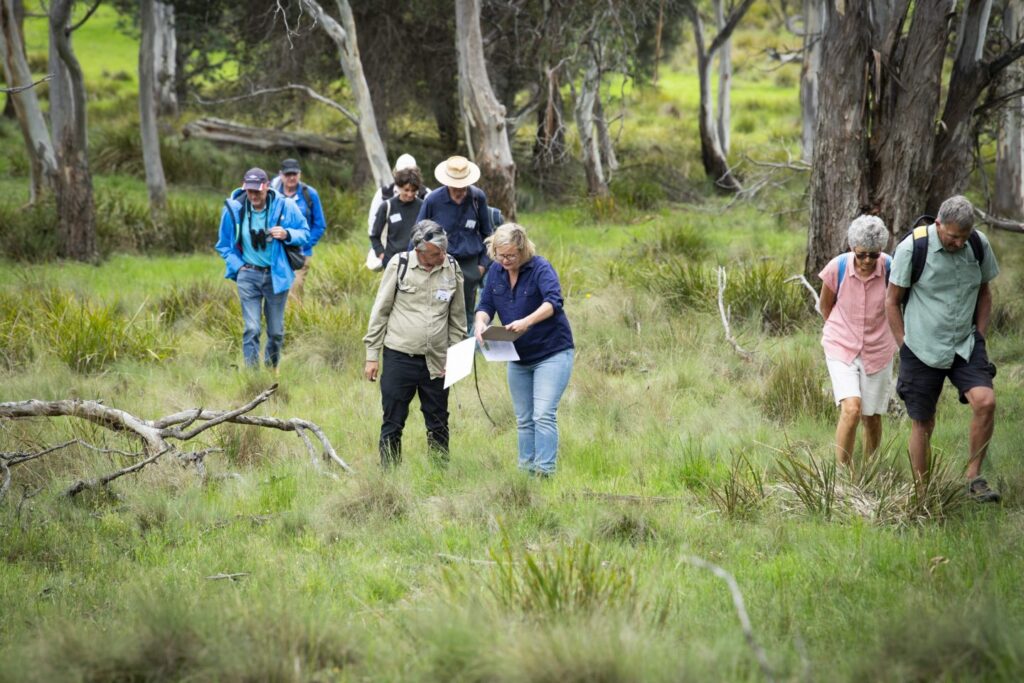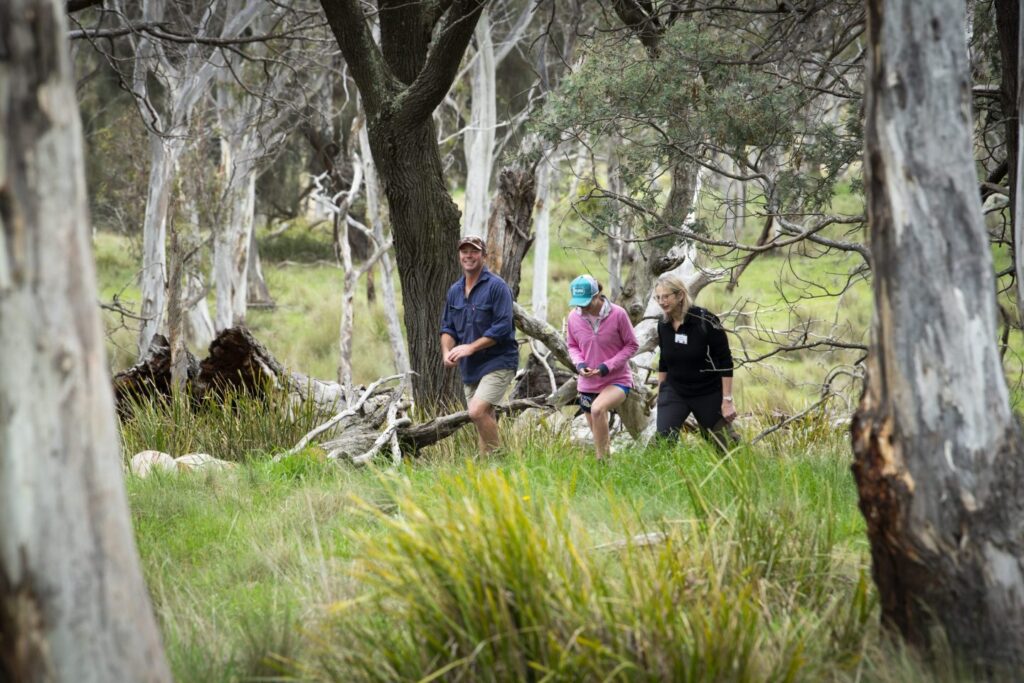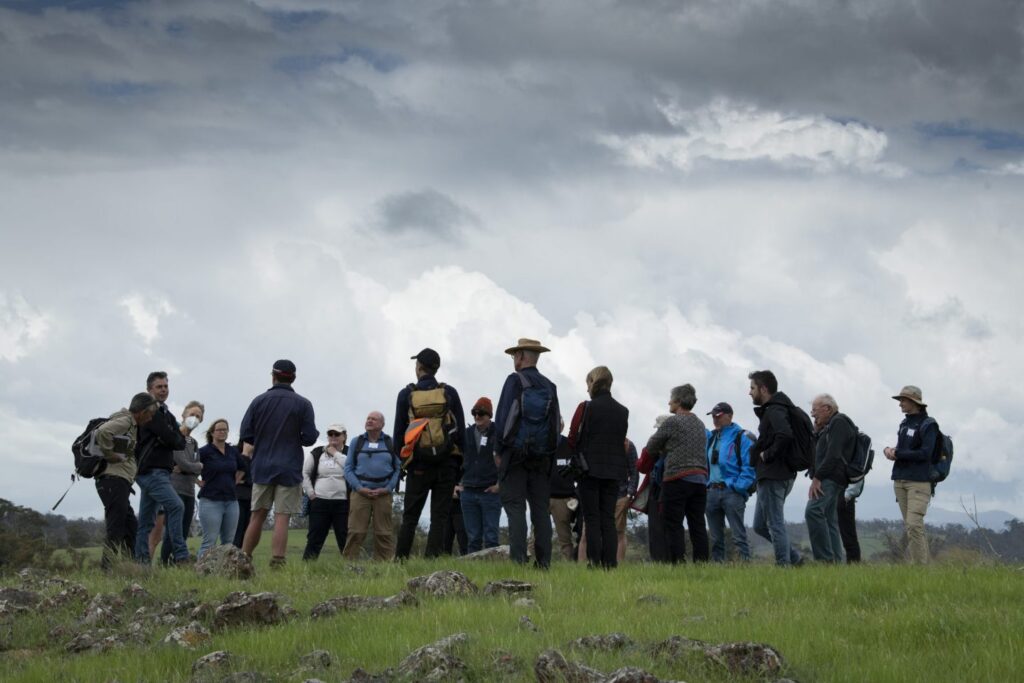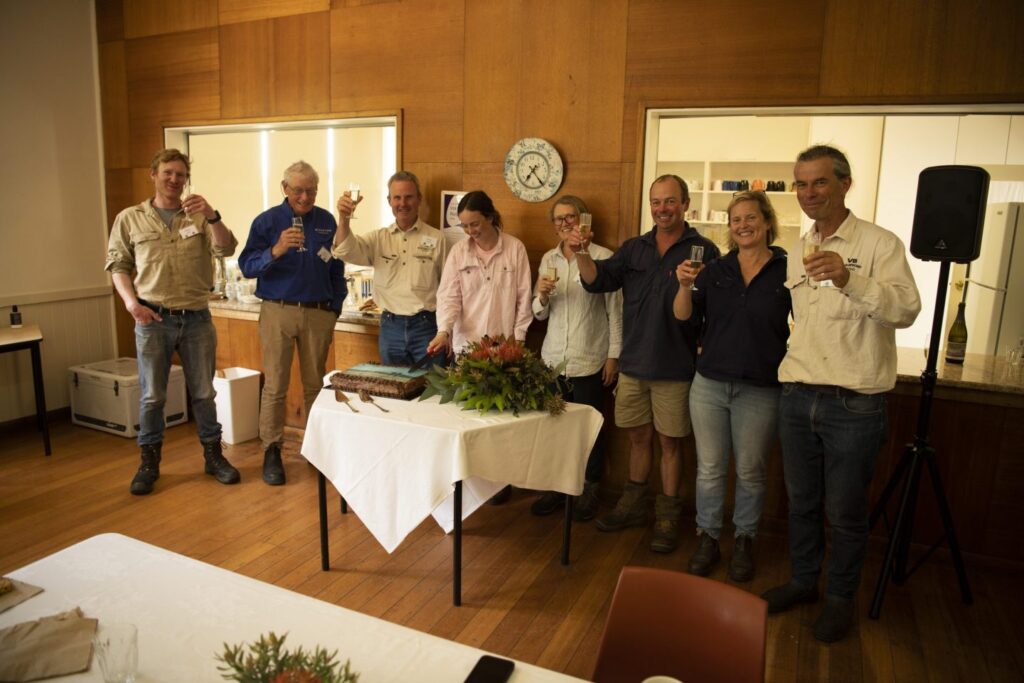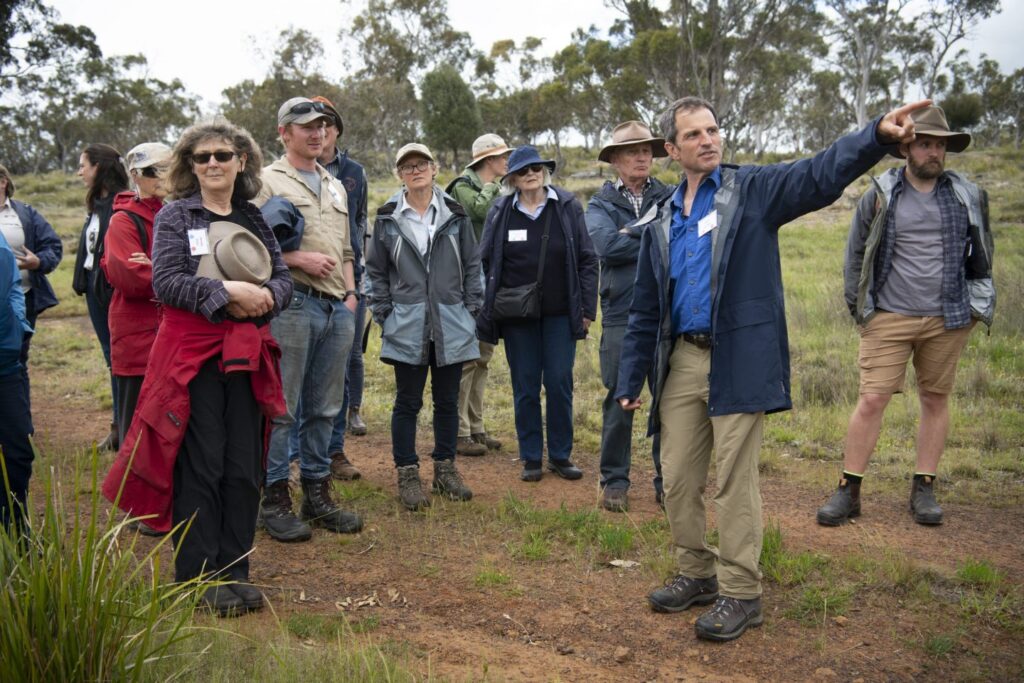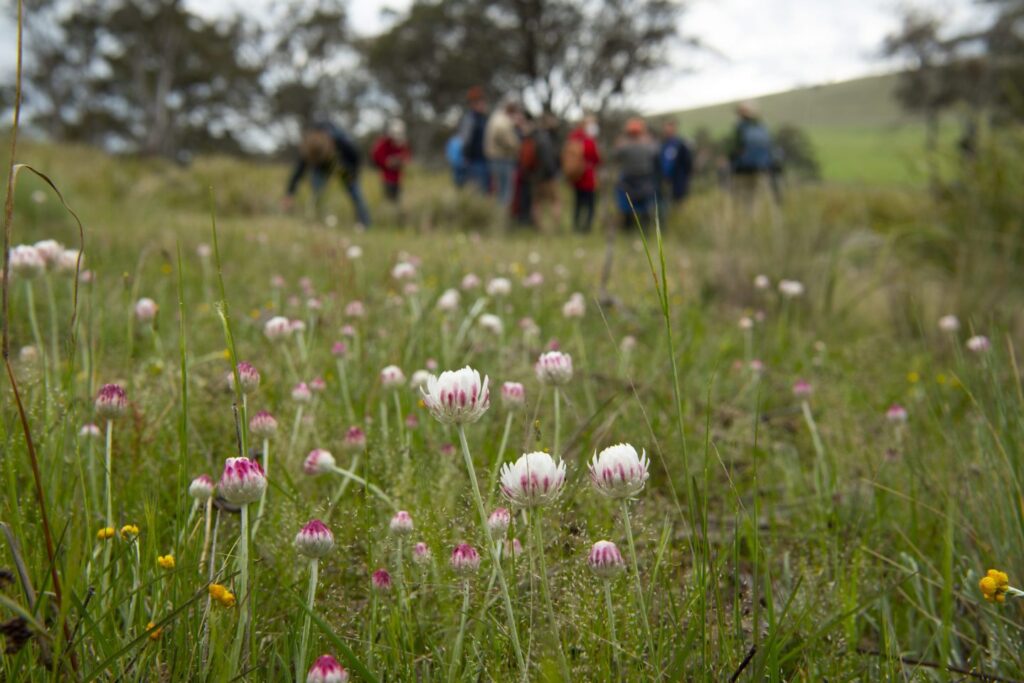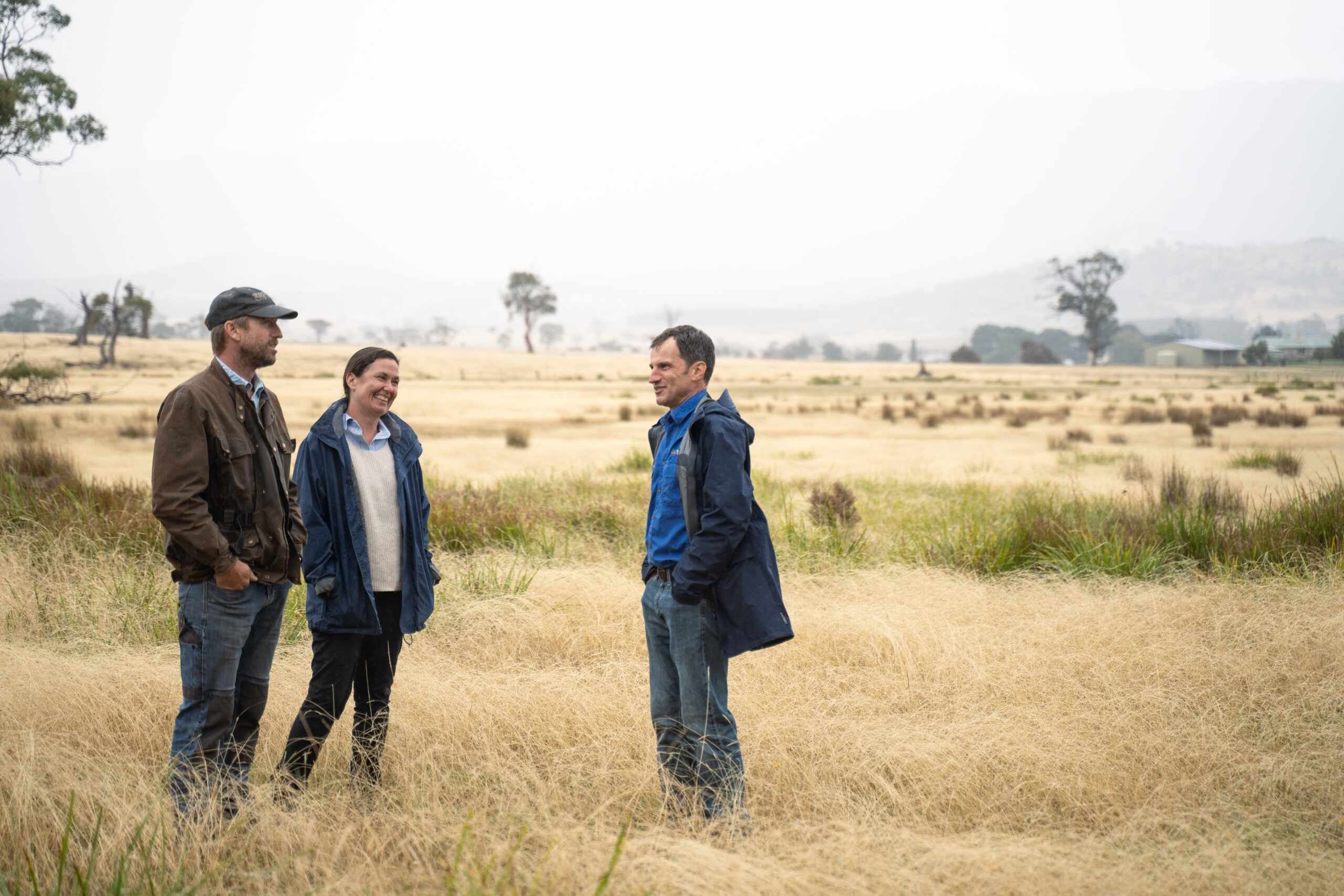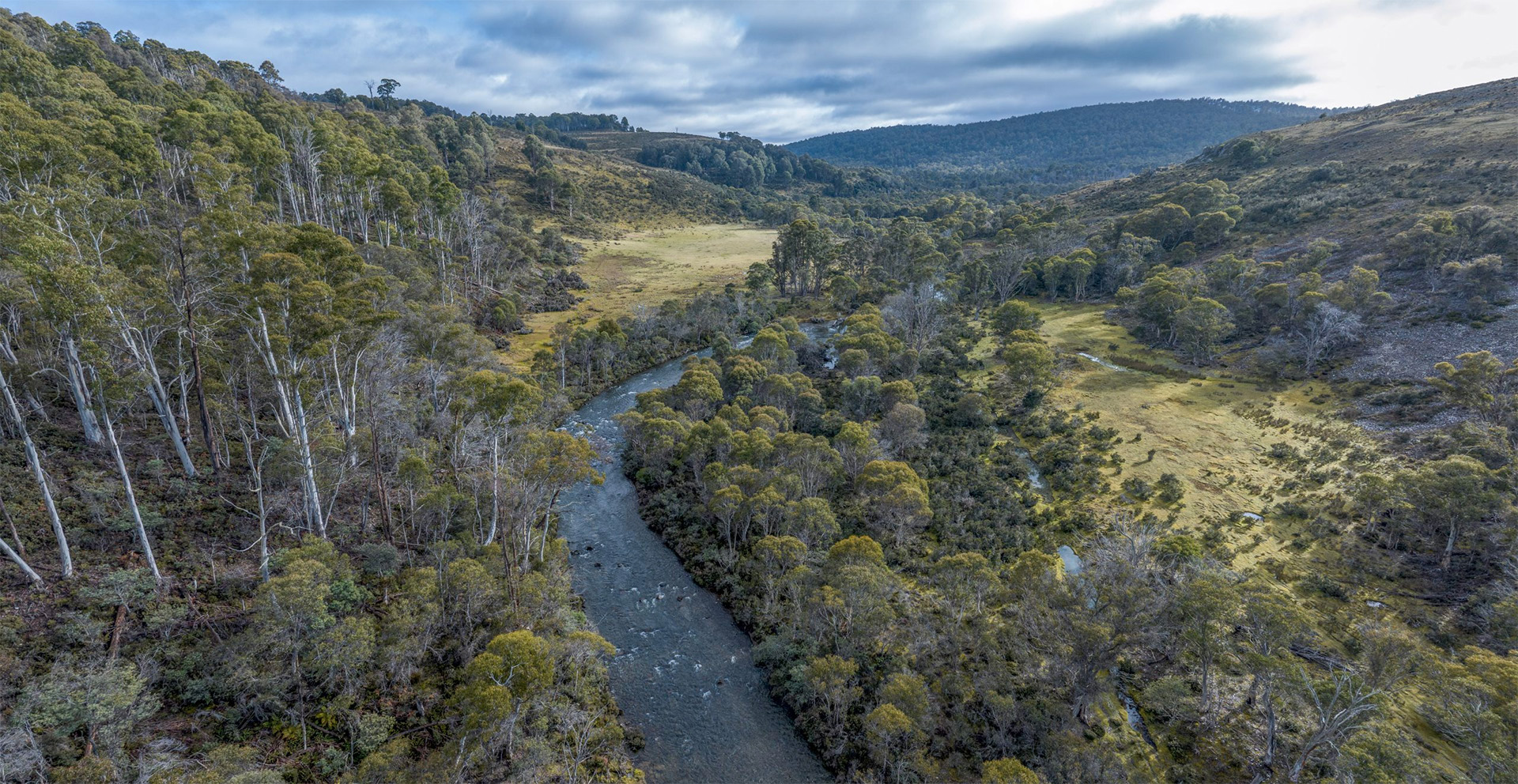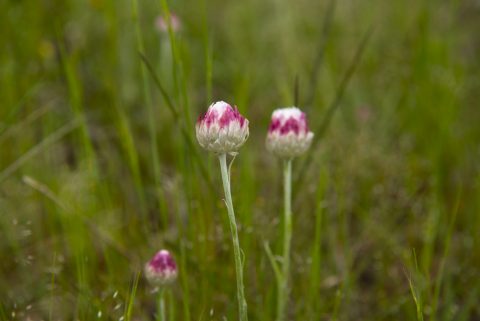The Tasmanian Midlands are home to some of the most threatened ecosystems in the world – temperate grasslands and grassy woodlands. The Midlands Conservation Partnership (MCP) brings farmers and conservationists together to protect these important landscapes and the species who call them home.
Established in 2011, the MCP is a joint initiative of nature conservation organisations, Bush Heritage Australia and the Tasmanian Land Conservancy. It is supported by the generosity of philanthropists.
A working landscape, the Tasmanian Midlands have, since colonial settlement, been largely turned over to sheep farming and – increasingly – cropping, poppies, orchards and vegetables.
At the same time, it is an ecologically unique landscape. Surrounded by mountains, the Midlands have lower rainfall than the state’s west, south and east. The Midlands are one of only two terrestrial priority places in Tasmania under the Federal Government’s 2022-32 Threatened Species Action Plan. The ecosystems that once flourished here are not well-protected in national parks and other protected areas elsewhere in Tasmania.
The MCP is working in partnership with farmers to support the co-existence of farming and nature so the landscape’s threatened species can flourish.
WHAT ARE WE PROTECTING?
The Midlands are rich in plant and animal species, many of which are endangered and found only in Tasmania. There are 32 nationally threatened species here and more than 180 plants and animals that are threatened in Tasmania.
The priority conservation target of the program is Tasmania’s critically endangered lowland native grasslands (Poa labillardierei grassland and Themeda triandra grassland). These grasslands have, since colonisation, been reduced to less than 5% of their original extent. Through the Midlands, only 30% of native vegetation remains and much of it has been degraded in some way. There is a pressing need to protect these precious remnants – they will not survive without action.
The Midlands are a refuge for three animals listed as priority fauna species under the Threatened Species Action Plan: the Australasian bittern, the eastern quoll and the growling grass frog. Eastern barred bandicoots and Tasmanian wedge-tailed eagles, and a suite of other threatened species, are also found in this landscape.
Among the grasslands are found a host of threatened orchids. Four of these have their largest populations on properties protected under the MCP: the golfers leek orchid (Paraprasophyllum incorrectum), Tunbridge leek orchid (Paraprasophyllum tunbridgense), Midlands greenhood (Pterostylis commutate) and the fleshy greenhood (Pterostylis wapstrarum).
WHY IS THE PARTNERSHIP NEEDED?
At the time of settlement in the early 1800s, the area was a mosaic of woodlands, grasslands, and wetlands, maintained by the traditional burning regimes of its Aboriginal custodians. The open landscape meant sheep grazing estates could be rapidly established on these native pastures. This form of farming left the native ecosystems relatively intact. However, with time, significant parts of the Tasmanian Midlands were turned to cropping and pastures fertilised for optimum yields.
By providing incentives against developing these areas into fertilised pastures or irrigated cropping, the MCP enables farmers to maintain their grazing tradition, protect ecosystems, and generate a reliable income from conservation. The MCP’s ecologists provide evidence-based guidance, helping conservation-minded farmers better manage the landscapes they cherish.
Since the partnership was established, it has secured the long-term protection and management of over 7,360 ha of high priority grasslands, wetlands, grassy woodlands, and forests across 14 properties. The MCP has secured 1,624 ha (11.6%) of its original goal of securing 8,000 ha (75%) of threatened native grasslands (Lowland Native Grasslands of Tasmania).
On-going ecological monitoring and reporting informs appropriate management to ensure the condition of these ecosystems is maintained or improves through time. The program’s longevity also created a trusting relationship with farmers who turn to its staff for ecological advice.
OUR VISION
To promote and facilitate long-term community-based protection and management of threatened native grasslands and associated wetlands and woodlands in the Tasmanian Midlands.
ABOUT OUR IMPACT GOALS
We are proud of what we have achieved in partnership with local landowners, and we know we have much more work to do. Our impact goals are:
- By 2025, the Midlands Conservation Partnership is recognised as the pre-eminent model that delivers conservation impact in the Midlands agricultural landscape.
- By 2027, 75% of the current extent of the nationally critically endangered lowland native grasslands and associated grassy woodlands and wetlands are protected in the Tasmanian Midlands focal landscapes, a designated priority place in the Threatened Species Action Plan 2022-32.
- By 2027, the condition of the critically endangered lowland native grasslands and associated grassy woodlands and wetlands under stewardship has been maintained or improved.
ABOUT OUR STRUCTURE
The Midlands Conservation Partnership (MCP) is a joint initiative of Bush Heritage Australia and the Tasmanian Land Conservancy. The model is funded through an endowment fund, the Midlands Conservation Fund, jointly owned by both organisations. The fund grows thanks to donations from philanthropists and members of the public.
The fund was established in 2011 as a company limited by guarantee. It is registered as a charity and on the register of environmental organisations. Its purpose is to provide secure and predictable funds to resource ongoing conservation management on properties secured through stewardship agreements in the Tasmanian Midlands. It is governed by a Board of Directors appointed by both organisations.
ABOUT OUR SUPPORTERS
Bush Heritage and the Tasmanian Land Conservancy gratefully acknowledge the support for the Midlands Conservation Partnership from the Sidney Myer Fund, the Myer Foundation, Vincent Fairfax Family Foundation, the John T Reid Charitable Trust, the Elsie Cameron Foundation, the Thomas Foundation and a number of private supporters.
GET INVOLVED
To learn more about The Midlands Conservation Partnership and how to get involved, please contact us at mcp@tasland.org.au
DONATE
If you would like to support this important work, donate here
All donations over $2 are tax deductible.
MEDIA ENQUIRIES
For all media enquiries, please contact the program’s coordinator Pierre Defourny on 0407 090 547.
Banner photograph: Matthew Newton
